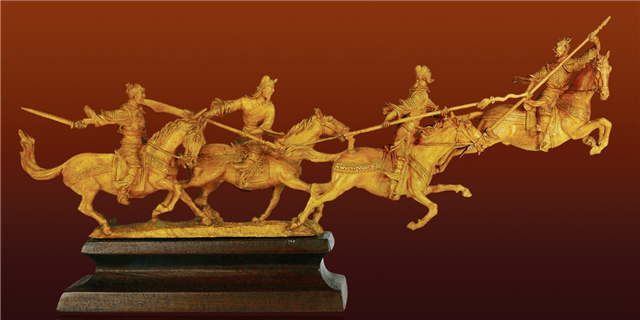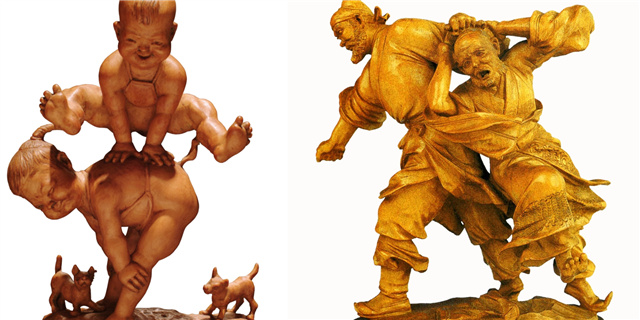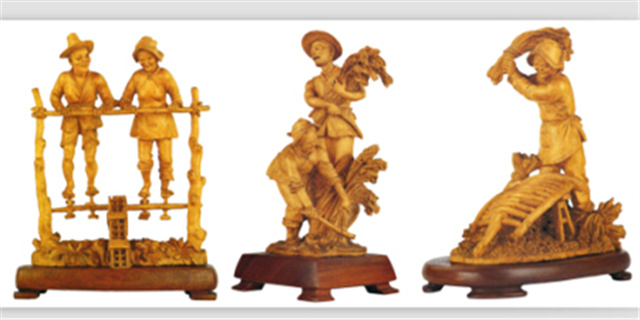Boxwood Carvings
Woodcarving has a long history in China. Boxwood is an ideal carving material due to its tight and tough grains, thus the title of “ivory of wood”. Shanghai-style boxwood carving has distinctive Shanghai-style artistic features and value. In 2008, boxwood carving is listed by the State Council in the list of the first batch of National-level Intangible Cultural Heritage. In the 1860s, the Society of Jesus set up an orphanage handicraft workshop in T’ou-Sè-Wè, Zi-Ka-Wei where a number of artistic talents were cultivated, including Xu Baoqing, the founder of Shanghai-style boxwood carving. Through over 70 years’ artistic tempering, Xu Baoqing had developed boxwood carving into a carving school with unique artistic concept and style, and formed a complete art system of Shanghai-style boxwood carving. Shanghai-style boxwood carving features the combination of Western sketching techniques, line performance and sculpture skills with Chinese traditional carving techniques. It inherits the tradition, but is bold and innovative. It emphasizes vividness and artistic expression of the cleverest moments in the life to form mellow and sprightly carving techniques, and focuses on creating works with unity of form and spirit by using concise ways of cutting and three-dimensional methods. It gets rid of traditional Western religions and covers a broad range of topics. Embodying national elements and cultural heritage, Shanghai-style boxwood carving has a high cultural and artistic value and social value.




